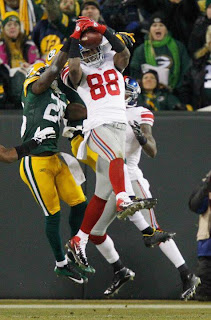So, it has come down to this; the end of my ethics class. In this class I've learned quite a handful of values and skills to navigate the Communications world with an ethically open mind. As a graphic designer, I already have an idea of the values of the creative world. Ethical decisions don't always equal moral decisions. In this final ethics class post, I'll be picking out 5 different posts and commenting on them with my own thoughts/analysis.
Crystal M. "Warning-Oft Times Indecisive": Post #4
Crystal's 4th blog post was very interesting to me. The topic was whether or not the definition of PR in a media context should be altered. Crystal wrote "The definition of PR currently is, “Public relations helps an organization and its publics adapt mutually to each other.” To this end, PR would be defined by the actions and results of organizations working with the public. My post dealt with the nature of PR versus what the definition should be changed to. The focus of this assignment was to consider what ethical developments contribute to the change. Crystal used an example from Netflix to illustrate how ethical issues might change the context of Public Relations. The example was the recent price hike for their current customers. There was no notice beforehand; that was definitely an ethical dilemna as Netflix treated their customers very poorly in that situation. I think that honestly, this is a good example, but another example couldn't have hurt. The Netflix price hike wasn't exactly a public relations fiasco, but the way it was handled falls under PR. I would've also liked to see what school of thought Netflix would fall under: Community, Anonymity, Transparency, etc.
Lacey Gilleran "Media_NERD Blog": Post- "The Falling Man"
Lacey's blog has entertaining for me. We both enjoy internet jokes and memes, and are generally conscious of creative media. One of Lacey's posts that interested me the most was the "Falling Man" post from 2 weeks ago. I believe this post surrounded the ethics of releasing certain information to the public and how it was handled. The "Falling Man" story involves a story being published in a New York newspaper after 9/11 where on picture within the article displayed a man falling to his death after jumping. This picture raised a small but strong uproar as the ethical integrity of the paper was threatened for writing such a story.
Lacey's post involved the ethical vs. moral dilemma with showing a fairly intense image on a public platform. She referred to our text: Media Ethics: Issues & Cases for details on the story itself. Lacey referenced the Society of Professional Journalists Code of Ethics. She notes that the code starts with a preamble that states:
“The duty of the journalist is to further those ends by seeking truth and providing a fair and comprehensive account of events and issues. Conscientious journalists from all media and specialties strive to serve the public with thoroughness and honesty. Professional integrity is the cornerstone of a journalist's credibility. Members of the Society share a dedication to ethical behavior and adopt this code to declare the Society's principles and standards of practice.”
This means that the journalist who that story, as well as the editor, was ethical in displaying the picture. An unprofessional and irresponsible move would have been posting a picture of the carnage that followed jumping out the window, or of the injured survivors at their lowest points. Lacey abbreviates the following points from the code: Seek Truth and Report It, Minimize Harm, Act Independently, Be Accountable. If there were any ethical dilemma that needed to be evaluated by those points, it was "The Falling Man". In my opinion, Lacey did a great job with this post and was very engaging in provoking thought about the ethical situation. To be honest, this seemed like a rare case that rocked back and forth over the lines of a moral problem and an ethical problem.
Kelly Elliot "Out and About" Cyberbullying- Age old behavior, new age twist
Kelly's blog was another interesting collection of insight and posts. One post that I found especially interesting was her take on the cyberbullying assignment/reading we had a couple of weeks ago. In her post, she listed links to sites that are dedicated to fighting cyberbullying, the cyberbullying laws for certain states, and spreading awareness. Personally I think the issue of exploiting cyberbullying and the releasing of details is ethical AND moral situation. Our assignment for this posting was to read an article that revealed that a newspaper chose to honor the anonymity of people responsible for a teen's suicide; they were bullying her through Myspace. My thoughts on cyberbullying is that it is up to the parents and adult figures to recognize and monitor the emotions and activity of potential victims.
Melissa Valerio "Professional Communication In the Digital Age" To Spill or Not To Spill
An entry from Melissa Valerio on her blog deals with ethics in releasing info. She brings up a VERY good point: being "ethical" is not the same as following the law. I agree with her view. The law is something that is followed or not followed and consequences ensue. Ethical thinking has no right or wrong outcome; there's more of a code or a known structure that is or isn't being breached when one thinks of ethics. Melissa says that laws can deviate from what is ethical. I don't completely agree with that. Personally, I think that people can interpret laws or cheat them in a non-ethical way. Further down in her post, Melissa provided a link (Should Classified Info Remain Classified?) for an online article questioning if classified information should be revealed to the public. For more light on the subject, Gabriel Schoenfield is interviewed in the article. There was a very interesting question in the article:
Is it the responsibility of the press to keep the government's secrets?
The answer underneath the question states that while it's the public's right to know, it is also the public's right not to know. Very interesting answer indeed.
Terrence White "Swag On Blast" You Can't Handle the Truth!
The last analysis/review for this post is Terrence White's blog. The particular post is his take on Case Study 2-E from our text books. In the post he offers a link to the code of ethics for APSE (Associated Press Sports Editors)- guidelines. Terrence makes a good point in noting "Guidelines can't cover everything. Use common sense and good judgement in applying these guidelines in adopting local codes" in the case study. I agree with that idea. Not all sports stories are black and white. There are dimensions and shades in which some stories develop. As a visual aid, Terrence posted pictures depicting the Duke Lacrosse Rape Scandal. I would've liked to see Terrence go into more detail about how case study 2-E applys to a specific story. Overall, it was a good review.
Melissa Valerio "Professional Communication In the Digital Age" To Spill or Not To Spill
An entry from Melissa Valerio on her blog deals with ethics in releasing info. She brings up a VERY good point: being "ethical" is not the same as following the law. I agree with her view. The law is something that is followed or not followed and consequences ensue. Ethical thinking has no right or wrong outcome; there's more of a code or a known structure that is or isn't being breached when one thinks of ethics. Melissa says that laws can deviate from what is ethical. I don't completely agree with that. Personally, I think that people can interpret laws or cheat them in a non-ethical way. Further down in her post, Melissa provided a link (Should Classified Info Remain Classified?) for an online article questioning if classified information should be revealed to the public. For more light on the subject, Gabriel Schoenfield is interviewed in the article. There was a very interesting question in the article:
Is it the responsibility of the press to keep the government's secrets?
The answer underneath the question states that while it's the public's right to know, it is also the public's right not to know. Very interesting answer indeed.
Terrence White "Swag On Blast" You Can't Handle the Truth!
The last analysis/review for this post is Terrence White's blog. The particular post is his take on Case Study 2-E from our text books. In the post he offers a link to the code of ethics for APSE (Associated Press Sports Editors)- guidelines. Terrence makes a good point in noting "Guidelines can't cover everything. Use common sense and good judgement in applying these guidelines in adopting local codes" in the case study. I agree with that idea. Not all sports stories are black and white. There are dimensions and shades in which some stories develop. As a visual aid, Terrence posted pictures depicting the Duke Lacrosse Rape Scandal. I would've liked to see Terrence go into more detail about how case study 2-E applys to a specific story. Overall, it was a good review.













